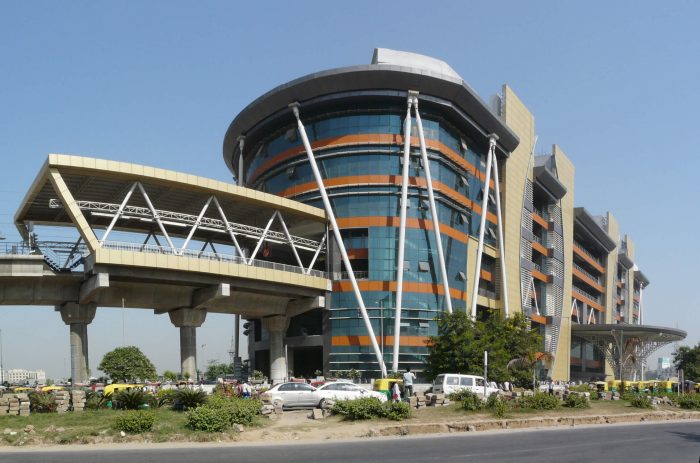History of Thane | Thane City Information
The city of Thane is situated on the western banks of Thane creek with Parsik Hills on the east and Yeour hills on the west. The word ‘Thane’ is derived from Sanskrit word ‘sthāna’ which means ‘place’. Besides being the stamping ground of the pre-historic tribes, Thane has a rich cultural heritage, mythological background, followed by a large number of events of historical importance, archeological collectives that have contributed to the enrichment of the history of Thane.
The existence of Thane city appears in history since ancient times. From B.C. 2500 to B.C. 500 there are the sign of trade with Egypt, Phoenicia and Babylon; from B.C.250 to A.D. 250 there are dealing with, perhaps settlements of, Greeks and Parthians; from A.D. 250 to A.D. 640 there were Persian alliance and Persian settlements; from A.D. 700 to A.D.
The city was then known as Shreesthanak & ‘Aparant’ is the ancient name of the geographical area hosting Thane city. It was more popularly known as the Capital of the Shilahar dynasty. From 810 A.D. to 1260 A.D. the Shilahar Dynasty ruled over Thane. In Shilharas regime Thane city was described as a pretty town by the Arab writers. The merchants who carried on the Thane trade were local Hindu, Muslman & Parsi traders. The shilaharas ruled over North Konkan for move than 400 years. They gave liberal patronage to art & Culture the temple at Ambarnath which is still extant testify the architectural & Sculptural skill of the age.
The Emperors of Shilahar dynasty were disciples of Lord Shiva and the Kopineshwar Temple has been built during their reign. At this time the Shilahars also divided the city into different sections and named them as ‘padas’. It is seen that these padas exist even today by names of Naupada, Patlipada, Agripada etc.
Thane - The Mughal Period
In the earlier part of the 12th Century A.D. with a view to creating a new township, King Bimbadev, along with 66 segments of his community came over and settled in Thane. In 1480 A.D. ‘Sultan Mehmood’ of Gujarat made Thane the Capital of his ‘Subha’ Province.
Under the emperor of Delhi, a religious officer or Kazi governed by a military officer or malik & Thane. Under the strong rule of Muhammad Tughlak the Moghul’s maintained their supremacy in north Konkan. In spite of this two Hindu chiefs held territory on the direct rought between Daulatabad & the coast. Mahadev chief of Baglan & the chief of Jawhar, who in 1341 was recognized by the Delhi court as the lord of twenty-two forts & of a country yielding a yearly revenue of Rs.9,00,000 in one of its stone inscription dated A.D. 1464 that the Hindu Chief of Bhiwandi had power to make land grants.
Thane - The Portuguese Period
In 1534, the Portuguese took the Salsette Islands Sultan Bahadur Shah of Gujarat. Sashti became part of the northern province of Portuguese India, which was governed from Baçaím (present-day Vasai) on the north shore of Vasai Creek.vSt. John the Baptist Church was constructed in Thane in 1663 A.D. The construction work of famous Thane Killa (Fort) was started in 1730 A.D. The Portuguese ruled Thane for over 200 years from 1530 to 1739 A.D. During this period Thane was known as “Kalabe De Tana”.
Thane - The Martha Period
The Portuguese power passed into the hands of Maratha after a long siege by Chimaji Appa, the brother of Peshwa Bajirao I. In 1737 A.D. Chimaji Appa the Maratha Sardar planned the ‘Conquest of Vasai’ and on 28th March 1738 the Marathas conquered the Thane Killa. The fort is presently being used as ‘Thane Central Jail’. For about sixty-four years, from 1739 to 1802 Vasai remained under the Maratha finally, in 1802 by the Treaty of Vasai it became a British possession & in 1818 it was incorporated in the Bombay Presidency.
Thane - The British Period
In 1802 by the Treaty of Vasai with Marathas, it became a British possession & in 1818, the territory now comprising Thane district, was incorporated in the Bombay Presidency & it became a part of North Konkan district, with its headquarters in Thana. Its boundaries have undergone numerous changes; some parts of South Konkan district were merged with North Konkan in 1830 and 1833. The expanded North Konkan district was renamed as “Thane’ district in 1833. On 16th April 1853, first railway line was opened for traffic from Bombay to Thane. The opening of this railway line is one of the most important landmarks in the economic development not only of the Bombay-Thane region but also of the outlying areas and hinterland.
Thane - After the Independance
After Independence, it became part of Bombay State. In 1960, the bilingual State of Bombay was bifurcated and the present State of Maharashtra came into existence. In 1969, the tahsil of Kalyan was bifurcated into Kalyan and Ulhasnagar . The Census town of New Mumbai (Thane) was added in 1982 in order to decongest Greater Mumbai by shifting population and office complexes to New Mumbai. Two new municipal corporations Thane and Kalyan were added after 1981, increasing the number of Corporations in the State from 5 in 1981 to 11 in 1991.
in August 2014 the district was split into two with the creation of a new Palghar district, leaving the reduced Thane district with a 2011 Census population of 8,070,032. The headquarters of the district is the city of Thane. Other major cities in the district are Navi Mumbai, Kalyan-Dombivli, Mira-Bhayander, Bhiwandi, Ulhasnagar, Ambarnath, Badlapur, Murbad, and Shahapur.
sources: https://thane.nic.in/



Pingback:Villages in Navi Mumbai | Gaothans in Navi Mumbai